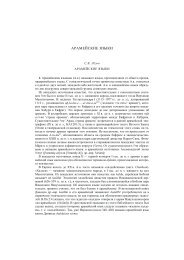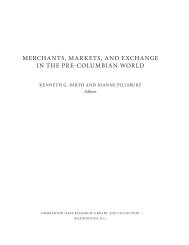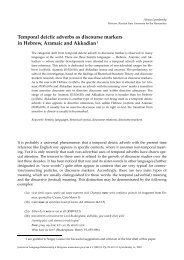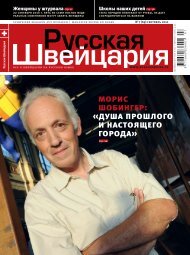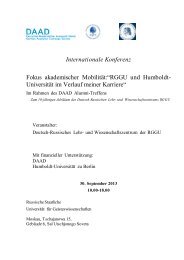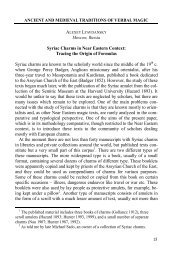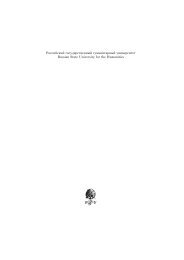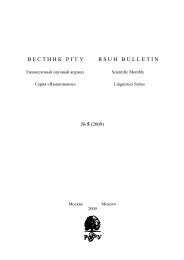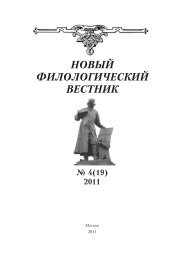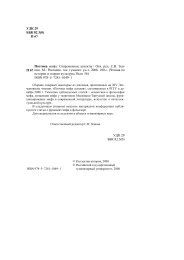Akkadian Sentences about the Present Time (II/2)
Akkadian Sentences about the Present Time (II/2)
Akkadian Sentences about the Present Time (II/2)
You also want an ePaper? Increase the reach of your titles
YUMPU automatically turns print PDFs into web optimized ePapers that Google loves.
776 Morphosyntax and Text Structure in <strong>Akkadian</strong>In OB letters, <strong>the</strong> SC has dozens of attestations (cf. CAD Q 228–230for a selection), in Kültepe I have found only one token in addition tothose four booked in AHw. 915a and CAD Q 229b. 43↓ Both dictionaries stick to <strong>the</strong> uniform rendering of <strong>the</strong> SC as a stativepredicate. AHw. 915a has ‘St. ist nah, in der Nähe’ as <strong>the</strong> gloss for<strong>the</strong> first sub-entry of qerēbum, <strong>the</strong> same tactics (‘is close’ and similar translations)is accepted in CAD Q 228–230. In both dictionaries, SC tokenspopulate, just on <strong>the</strong>ir own, entire sub-entries for individual meanings.All this may be understandable in view of <strong>the</strong> assumed semantically deadjectivalnature of qerub/qurub, revealed formally by its “adjectival” vocalism.But a closer look shows that in both dictionaries an oversimplificationin <strong>the</strong> arrangement of <strong>the</strong> evidence might have occurred. Analarming fact is that no reliable token of <strong>the</strong> Pres. has been found in ei<strong>the</strong>rOB 44 or OA letters, though <strong>the</strong> Pres. of qerēbum is expected to code<strong>the</strong> progressive sense ‘is/was approaching.’ Indeed, <strong>the</strong> nature of oursources does not impede expressing this nuance of meaning: in letters,one mentions approaching/proximity of seasons, troops and o<strong>the</strong>r entitiesmoving in space or time. Therefore I suggest that <strong>the</strong> SC of qerēbumhas both stative and dynamic readings, depending on <strong>the</strong> context andlexical meanings of <strong>the</strong> respective grammatical subjects. Thus, šadûm qéru-ub‘das Gebirge lag nahe’ (AbB 8, 92:27) is stative. 45 Yet, in d UTU-ši- d IMu ummānātū-šu qé-ru-ub ¢ēmum annûm limu¢ (AbB 8, 15:40–45), <strong>the</strong> SCcodes a situation that “in real life” is dynamic, ‘Šamši-Adad with histroops is approaching, (<strong>the</strong>refore) this message is to be delivered rapidly.’ 46Additional instances of this kind can be easily found in <strong>the</strong> dictionaries. If43KÙ.BABBAR.áp-kà qú-ru-ub ‘Dein Silber ist nahe’ (Prag I 483:25). This passageis similar to ŠE ù KÙ.BABBAR ú-ul qé-er-ba-am-ma ‘wenn Silber oder Gerste mir nichtzur Verfügung steht’ (AbB 1, 118:13); this may have been a lexicalized usage ofqerub/qurub in <strong>the</strong> business <strong>Akkadian</strong> (‘to be available’), and cf. CAD Q 230b e.44My search result agrees with Kouwenberg forthcoming 3.3.3, fn. 57: OBiqarrab “is inferred from sporadic OB iqrab” (cf. ana iāriš iq-ra-ab in CT 15, 5 ii 8= CAD Q 234b).45It is likely that CH 8:15 šumma … šībū-šu lā qer-bu also belongs here, because,as I will try to show below, <strong>the</strong> SC of qerēbum encodes ei<strong>the</strong>r a “pure” state or anatelic process, while its capacity to denote a resultative state is questionable due to<strong>the</strong> atelic nature of <strong>the</strong> root. Thus, I understand this clause as ‘if his witnesses arenot around,’ in spite of <strong>the</strong> parallelism with šumma … šībī-šu lā irdi-am in <strong>the</strong> same§ 13. One has to bear in mind that <strong>the</strong> SC of certain verbs can be used in <strong>the</strong> slotsof <strong>the</strong> Perf. and <strong>the</strong> Pret., yet this is not <strong>the</strong> case with qerēbum.46See Charpin–Durand 1997:379–381 for a new historical interpretation ofthis letter.




